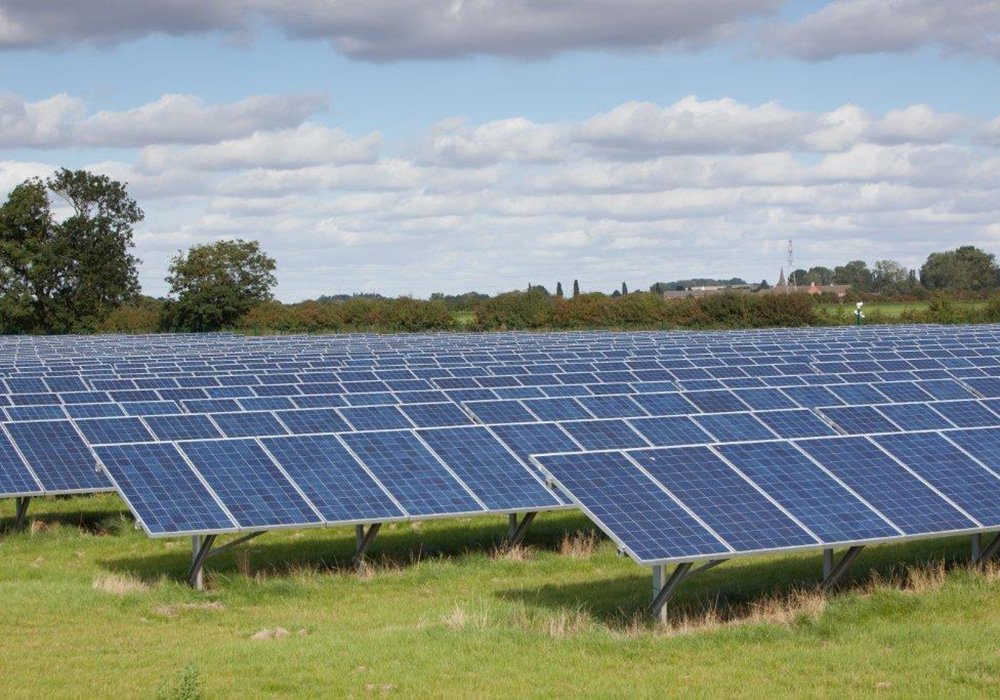With the fight against climate change still ongoing, finding sustainable solutions is more important than ever. Solar power is an incredible renewable source that helps reduce both fossil fuel intake and carbon emissions. Among the different forms of solar technologies, ground-mounted solar panels stand out as one of the most efficient and sustainable options. Unlike rooftop systems, these eco-friendly solar panels are mounted directly on the ground. Today, we will examine the impact of these solar panels on the environment and how they help the Earth become cleaner.
Ground-Mounted Solar Panel Benefits
One of the standard global issues today is the increased greenhouse gas emissions. With the use of ground-mounted solar panels, this issue can be addressed without much hassle. Solar energy generates electricity from sunlight, meaning there will be no emissions of toxic gases like carbon dioxide (CO₂), methane, or nitrogen oxides. Furthermore, these harmful gases are some of the root causes of global warming. Ground-mounted systems provide significant reductions to the carbon footprint of homes, businesses, and utility-scale projects by replacing electricity from solar energy instead of coal, oil, and gas. After some time, a single ground-mounted solar array could offset large quantities of CO₂, directly aiding in climate change mitigation.
Maximizing Space Efficiently with Dual Space
There is some misunderstanding surrounding the use of ground-mounted solar panels. They do not have to interfere with agricultural or conservation land. Many installations take up agrivoltaics, a method wherein land is used simultaneously for the production of solar energy as well as for agricultural endeavors. Crop rows can be planted underneath or in between the solar arrays, which also aids in reducing evaporation. At times, livestock like sheep are seen grazing between the panels. This process improves eco-productive synergy and supports clean energy generation.
Natural Resource Preserving
Making solar energy unrestricted would allow for effortless usage. Conventional methods of electricity generation, for example, use an entire body of water just for cooling. Water is not needed to power solar panels. Ground-mounted solar panel systems also do not incur additional water usage since there is no need for roofing structures and cooling towers. Storing fresh water would greatly ease the burden for regions and areas faced with droughts or water shortages. Ground-mounted solar systems curb water usage and help conserve wetlands, rivers, and aquifers.
Maintaining Soil and Improving the Ecosystem
The installation of ground-mounted solar panels does not significantly disturb local soil and landscaping. Installation and maintenance of modern solar farms almost always ensure that impact on soil is kept to a minimum and follows best practices like low impact development (LID). Moreover, the area underneath the panels can be sown with native grasses or pollinator-friendly vegetation to support habitats for bees, butterflies, and other beneficial insects. These pollinator habitats are important for land restoration efforts and protecting the ecosystem. Moreover, the exposed ground sown with soil-loving plants will aid in preventing soil erosion and support soil fertility.
Support for Biodiversity and Wildlife Corridors
Ground-based solar farms, if well planned, can provide safe refuges for different types of wildlife. Many solar developers include wildlife corridors in or around solar arrays for easier animal movement between habitats. Buffer strips of indigenous vegetation for avian nesting sites and enhancing biodiversity can also be added. Solar farms greatly mitigate the destruction of habitat due to fossil fuel extraction, mining, and pipeline construction. These systems enhance biodiversity because they occupy underused or degraded land, enabling ecosystem rehabilitation at a regional level.
Less Noise and Air Pollution
Solar panels that are mounted on the ground clean the air by removing pollutants from conventional energy sources. The coal-fired power plants emit hazardous materials such as sulfur dioxide and particulates that are known to cause respiratory illnesses and are damaging to the environment. Additionally, solar energy production does not make noise or emissions, thereby lowering air and noise pollution. Because of this, it is best to locate Solar energy by ground-mounted panels along residential areas, schools, and hospitals, as it provides noiseless and clean energy.
Easily Reusable and Long-Term Sustainability
Solar panels have a “desirable life”—typically between 25 to 30 years, and continue to function efficiently with very little upkeep—solar panels sustain. Although at the end of their life cycle, many components can be recycled, such as metals, SiO2 glass, and silicon. Innovations do make getting raw materials much easier, as they reduce the amount of waste generated. It is much easier to recycle and take apart ground-mounted systems than rooftop panels, because these systems are placed in a more open modular environment. Because of those principles of a circular eco-system, it minimizes the evenly distributed environmental issues for its long-term use.
Conclusion
The environmental advantages of ground-mounted solar panels include clean electricity is but one of many benefits. They help mitigate carbon emissions, water consumption, soil and ecosystem damage, land reclamation, as well as support biodiversity. With increased awareness and improvements in technology, ground-mounted solar installations can serve as an eco-conscious answer to our energy problems. Both on farms and former industrial sites, these systems demonstrate the effective integration of renewable energy within nature. Investing in solar panels is a step towards sustainability and ecological balance for the coming generations.
